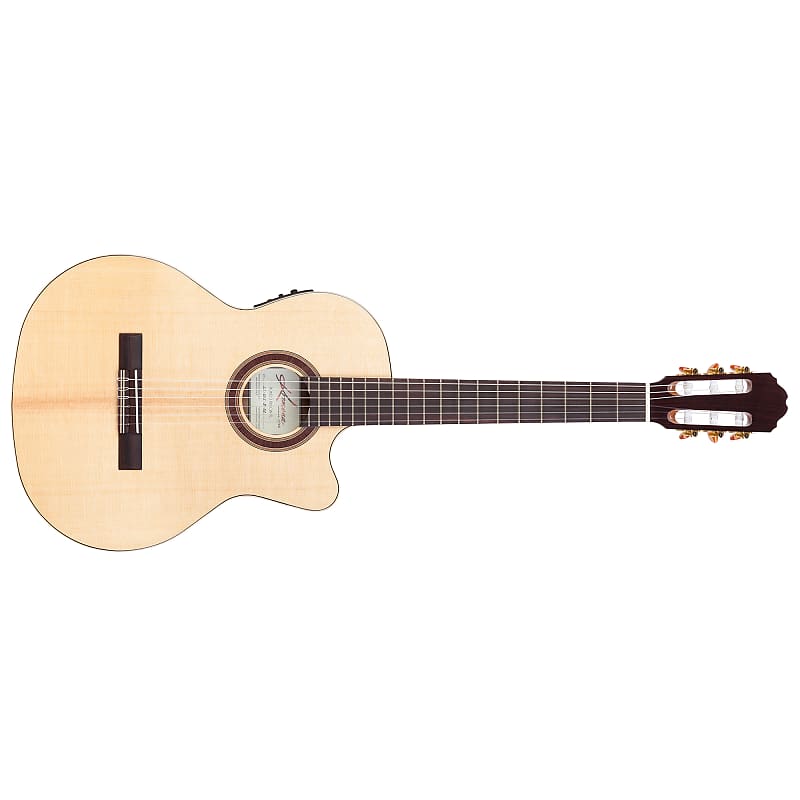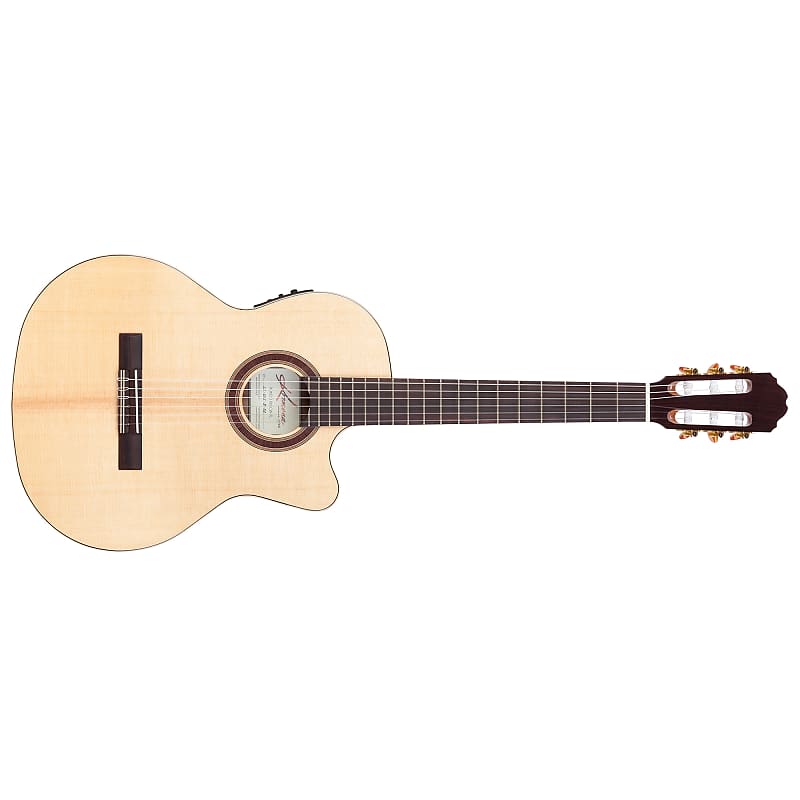An unplugged electric guitar produces a quiet, thin sound due to its solid body. The volume is low and lacks acoustic resonance.
Electric guitars are iconic instruments that shape the soundscape of many music genres, from rock to blues. While primarily designed for amplification, these guitars emanate a soft, muted tone when not connected to an amp. This is because, unlike acoustic guitars that feature a hollow body to amplify string vibrations, electric guitars rely on electromagnetic pickups to convey their sound to an amplifier.
Enthusiasts often strum unplugged electric guitars during informal practice sessions or while composing new music, enjoying the subtle, unprocessed twang of the strings. The sound is sufficient for personal enjoyment or to get a sense of a tune, but it doesn’t carry well, nor does it reveal the instrument’s potential that comes alive with electronic enhancement.
Understanding The Electric Guitar’s Acoustic Properties
Understanding the Electric Guitar’s Acoustic Properties is crucial for musicians who seek to grasp the full potential of their instrument. An electric guitar, when not plugged in, provides a unique sonic experience vastly different from its amplified counterpart. This whispered timber under your fingers has a charm of its own, waiting to be discovered. By delving into its design, construction, and the natural resonance it offers, we begin to appreciate the nuanced acoustics of an unplugged electric guitar. Let’s examine the inherent acoustic qualities and how they are shaped by various design elements and guitar models.
Design And Construction Differences Compared To Acoustic Guitars
The architecture of an electric guitar sets it apart from an acoustic guitar. Materials, body thickness, and string type are key factors influencing its unplugged sound. Electric guitars typically feature solid bodies that lack the resonating chamber an acoustic has. This results in a quieter and thinner sound when unamplified. The body’s material, often denser woods like mahogany or maple, and the design, such as the inclusion of cavities or a semi-hollow structure, can also alter the resonance and sustain of the guitar when played acoustically.
Natural Acoustic Tonal Characteristics Of An Electric Guitar
The acoustic tone of an electric guitar is often described as subdued and intimate, a contrast to the guitar’s amplified persona. It’s predominantly a mid-range focused sound with diminished bass and treble frequencies. Without the assistance of pickups and amplifiers, the sound lacks volume but provides a pure and unfiltered insight into the string’s vibrations. This innate sound is perfect for quiet practice sessions or songwriting, where subtlety and nuance are treasured.
- Volume: Significantly lower than an acoustic guitar
- Tone: Mid-focused, lacking in bass and treble definition
- Sustain: Shorter due to less acoustic energy
Variations In Sound Amongst Different Electric Guitar Models
Each electric guitar model offers a distinctive unplugged sound profile. The Les Pauls, with their solid construction and heavier body, produce a warmer and more pronounced acoustic tone. In contrast, Stratocasters, known for their lighter bodies and springier wood, have a sharper and more articulate sound. Additionally, models like the ES-335 with semi-hollow bodies bring a closer resemblance to acoustics with enhanced volume and resonance. The choice of pickups does not affect the unplugged sound, but scale length, body wood, and construction style all play pivotal roles in defining each model’s unique acoustic voice.
| Guitar Model | Body Type | Acoustic Character |
|---|---|---|
| Les Paul | Solid | Warm, Pronounced |
| Stratocaster | Solid | Sharp, Articulate |
| ES-335 | Semi-Hollow | Voluminous, Resonant |

Credit: reverb.com
Playing The Electric Guitar Unplugged: A User’s Perspective
Imagine a scene: a guitarist, an electric beast in hand, yet not a cable in sight. An electric guitar, known for its fiery amplification, sits unpowered, a seeming contradiction. This scenario, however, is far from the world of silent strings and lifeless frets. Playing the electric guitar unplugged offers a unique, intimate experience, differing significantly from its amped counterpart. Let’s dive into what this incredibly personal side of electric guitar playing feels like, sounds like, and when it might be the perfect choice for your musical expression.
Volume Levels And Ambient Noise
Strum or pluck the strings of an unplugged electric guitar, and you’ll discover a sound that is markedly quieter than that of an acoustic guitar or an amped electric. It retains a distinctive timbre, a reflection of the guitar’s construction and the player’s technique. The following considerations shape the unplugged experience:
- The density and type of the guitar’s body wood influence the natural resonance.
- String gauge and material can either dampen or enhance the acoustic volume.
- Ambient noises, like conversations or environmental sounds, can easily overshadow the guitar’s sound.
This quietude can be a sanctuary for practice or tonal exploration without disturbing others, allowing for a focus on the raw, unadulterated touch of fingers on strings.
Practical Scenarios For Playing Unplugged
The electric guitar, even without amplification, fits perfectly into a variety of practical scenarios:
- Quiet environments: Practice late at night or in a shared space without worrying about volume.
- Songwriting: Capture the essence of a new tune anywhere, without the need for an amp or power.
- Travel: Keep your fingers nimble and your mind inspired while on the road.
These situations make unplugged play not just an option, but often the preferred method for accessing creative flow on-the-go or in moments of spontaneity.
Perception Of Sound Quality And Dynamics
The sound quality and dynamics of an unplugged electric guitar offer a distinct feel that differs from plugged-in play. Users often find:
- A cleaner auditory path to discern picking dynamics and fretting accuracy.
- The opportunity to experience the guitar’s pure mechanical sound, uncolored by electronic effects or amplifiers.
- Dynamics that are more transparent; playing lightly results in soft whispers of tone, while digging in can elicit a surprising punch, considering the lack of amplification.
Playing unplugged shines a light on the guitarist’s raw skill, making it an excellent tool for honing one’s craft.
The Role Of Amplification In Shaping Electric Guitar Sound
Picture the electric guitar, an iconic instrument synonymous with rock ‘n’ roll. Now, imagine it unplugged from its lifeline—the amplifier. The result? A sound that can surprise those accustomed to its amplified glory. Amplification is not merely a means to increase volume; it fundamentally transforms the electric guitar’s voice, from a whisper to a roar. Dissimilar to its acoustic counterpart, an electric guitar not plugged in offers a faint echo of its amped potential, underscoring the amplifier’s vital role in molding its distinctive sound.
How Amplifiers Enhance And Modify Electric Guitar Tone
The amplifier and the electric guitar form an inseparable duo that redefines the guitar’s voice. Here’s how:
- Volume boost: An amplifier’s prime function is to magnify the guitar’s sound, delivering the volume necessary for performances.
- Coloring the sound: Amplifiers are equipped with various controls and circuitry that shape the guitar’s tone, adding richness and character.
- Creating distortion: When pushed beyond their limits, amplifiers produce overdrive and distortion, essential for genres like rock and blues.
The nuances in the amplifier’s settings can alter an electric guitar’s tone profoundly, converting a simple pluck into a powerful musical statement.
Pickups: Translating String Vibrations To Electrical Signals
At the heart of an electric guitar’s amplified identity are its pickups. These transducers play a pivotal role:
- String vibrations: As strings vibrate, the pickups capture these movements, transforming them into electrical signals.
- Types of pickups: Single-coil and humbucker pickups color the sound differently, influencing the tone even before amplification.
Without amplification, the subtle qualities of different pickups are less perceptible, manifesting in a more subdued acoustic output from the guitar.
Effects Of Absence Of Amplification On Playability And Technique
The unplugged electric guitar poses unique challenges and insights into playability:
- Dynamics: Playing without an amp requires a more forceful touch to produce audible sound, potentially altering playing dynamics.
- Technique: Techniques like bends, vibrato, and hammer-ons might feel different and prompt adjustments in playing style.
- Practice tool: Practicing unplugged can refine one’s technique, accentuating the importance of clean fingering and articulation.
Although muted, an electric guitar without amplification remains a valid and useful instrument, offering a more intimate practice experience.

Credit: reverb.com
Does Not Plugging in an Electric Guitar Affect Its Sound Quality?
Not plugging in an electric guitar will significantly affect its sound quality. Without an amplifier, the guitar’s natural tones and dynamics remain muted. Understanding electric guitar power requirements is essential for achieving the desired sound, as proper amplification brings out the instrument’s full potential, enhancing clarity and richness.
Frequently Asked Questions On What Does An Electric Guitar Sound Like Not Plugged In
Can You Hear An Unplugged Electric Guitar?
Yes, you can hear an unplugged electric guitar, but the sound is much quieter compared to when it is amplified.
Can You Play An Electric Guitar Without It Being Plugged In?
Yes, you can play an electric guitar without plugging it in, but the sound will be much quieter compared to using an amplifier.
Does Electric Guitar Sound Like Acoustic When Unplugged?
An unplugged electric guitar does not sound like an acoustic guitar. Electric guitars lack the acoustic body that produces the guitar’s resonance.
Do Electric Guitars Need To Be Plugged?
Electric guitars typically require amplification and need to be plugged into an amp to produce their full sound. Unplugged, they emit a quiet tone suitable for practice.
Conclusion
Understanding an electric guitar’s acoustic properties helps players appreciate its versatility. Strumming it unplugged reveals a softer, more intimate tone. It’s a unique experience, different from its amplified roar. Remember, the true essence of its sound lies within its electrified echo.
Keep exploring your guitar’s range, both plugged and unplugged.
{ “@context”: “https://schema.org”, “@type”: “FAQPage”, “mainEntity”: [ { “@type”: “Question”, “name”: “Can you hear an unplugged electric guitar?”, “acceptedAnswer”: { “@type”: “Answer”, “text”: “Yes, you can hear an unplugged electric guitar, but the sound is much quieter compared to when it is amplified.” } } , { “@type”: “Question”, “name”: “Can you play an electric guitar without it being plugged in?”, “acceptedAnswer”: { “@type”: “Answer”, “text”: “Yes, you can play an electric guitar without plugging it in, but the sound will be much quieter compared to using an amplifier.” } } , { “@type”: “Question”, “name”: “Does electric guitar sound like acoustic when unplugged?”, “acceptedAnswer”: { “@type”: “Answer”, “text”: “An unplugged electric guitar does not sound like an acoustic guitar. Electric guitars lack the acoustic body that produces the guitar’s resonance.” } } , { “@type”: “Question”, “name”: “Do electric guitars need to be plugged?”, “acceptedAnswer”: { “@type”: “Answer”, “text”: “Electric guitars typically require amplification and need to be plugged into an amp to produce their full sound. Unplugged, they emit a quiet tone suitable for practice.” } } ] }